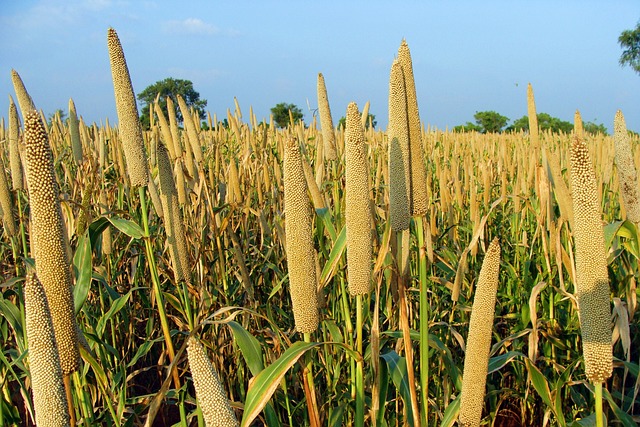By: Tini Thangjam
As the year 2023 is approaching towards the edge of a cliff, I would like to share a major step taken towards providing nutritious food this year. The year 2023 was declared as the International Year of Millets (IYM2023) by the UN General Assembly at its 75th session, the idea which was proposed by India. Its aim is to create awareness about the nutritional and health benefits of millets, as well as the sustainability in cultivating them in adverse and changing climatic conditions. Uptill now, many sectors specially, the agriculture and food departments have taken up innovative ways as a promise to IYM2023 by creating awareness regarding the production of the crop and its processing.
Millets have been with us since time immemorial. It has played a significant role in shaping the human societies, contributing to the cultural and historical dome. They have been cultivated widely across Asia and Africa. The evidence of its cultivation has been found in the Korean Peninsula dating back to the Middle Jeulmun Pottery Period (3500-2000 BC) and in the early Neolithic period in China. It brought about agricultural revolutions in regions of ancient Egypt and Mesopotamia. The Yajurveda texts of India also indicate millets being a common crop for consumption, pre-dating to the Indian Bronze Age (4500 BC). They were a major crop and even considered a staple around 50 years ago in India. However, due to westernization and the Green revolution focusing mainly on wheat and rice, the popularity and production of millets dropped from 40% to a drastic decrease to 20%.
They are a group of cereal grains of a wide variety of small seeded grasses. They resemble seeds but are more closely related to cereals on the basis of their nutritional profile. They are largely grown for human consumption or as fodders. Millets are not a single species crop, it rather encompasses an array that fits under the categorization of millets. They are annual and have a short growing season, usually growing in dry and high temperature conditions.
Millets can grow in spike high temperatures as much as 50oC or even in adverse situations such as drought and flood. They can adapt to poor, dry infertile soil making them a crop that can grow without the use of fertilizers. Their root system is effective to the point that it does not require much water as compared to other cereal crops. It can reach deep into the layers of soil to access water. As it has a short growing season, it can complete its life cycle without consuming much water. This characteristic is ideal for the contemporary world facing the setbacks of global warming and climate change. Moreover, it provides food security even amidst this prevailing crisis.
The long history and the widespread consumption are not only related to its ideal growing conditions. It has significant advantages regarding health benefits. It is mainly composed of carbohydrates. However, unlike wheat these are gluten free. For people who are sensitive to gluten or suffering from celiac disease can opt for millets. After carbohydrates they mainly consist of protein and dietary fibre. They contain more amounts of essential amino acids as compared to other cereal grains. Moreover, the dietary fibre in millets are of two types; soluble and insoluble fibre. These two are responsible for improving digestive health and preventing diseases such as colon cancer. The soluble fibre traps fat in the gut, which lowers the cholesterol in blood. It helps reduce chances of atherosclerosis or heart diseases. In addition, magnesium present prevents heart failure. They are also regarded as low glycemic index foods that controls the blood sugar level of the body. Metabolization of sugar majorly affects how our body age. Tannins, phenols and phytates present in millets protect cells against damage which can contribute to anti-aging. Some millets are a good source of vitamin B which play a major role in everything from brain function to creating healthy cells. Moreover, it has beta-carotene (in dark coloured grains) which converts to vitamin A and help our body by supporting the immune system and fighting against free radicals.
Millets are of vast varieties, they are; fox millet (kakum), pearl millet (bajra), finger millet (ragi), sorghum millet (jowar), proso millet (cheena) and others. They are usually incorporated in our diets as porridge, side dish, cake ingredient or as millet flour. Traditionally, in India they are consumed in the form of roti, dosa, idli, kheer, khichdi, etc. Due to innovation and creative thinking they can now be found in the form of noodles, snack mix, cookies, millet drink and many more.
They contain a substance known as phytic acid which is an antinutrient that prevents the absorption of other nutrients. They prevent the uptake of iron, calcium and other minerals. Soaking in warm water is the simplest solution to remove antinutrients. Other methods include fermentation, enzymatic hydrolysis and germination. All of these methods increase the bioavailability of minerals. One should also keep in mind that they should be consumed in moderation as they are calorie-rich foods.
Thus, from the facts presented, it is safe to say that millets are one of the oldest and healthiest grains to consume. With its ease in cultivation and layers of benefits including food security, I would like to call it ‘the forgotten super grain’. I suggest everyone to include them in their diets to promote a healthy living.
(The writer has finished her Bachelors in Food Technology from College of Food Technology, CAU, Lamphel, Manipur. The writer can be reached at [email protected])
2023: International Year of Millets
1.2K
previous post



